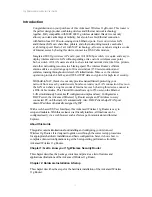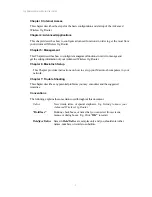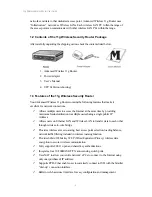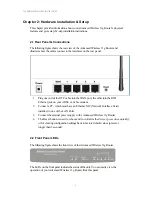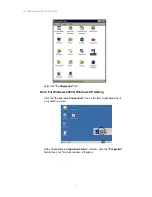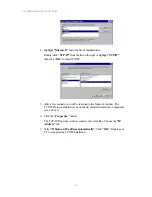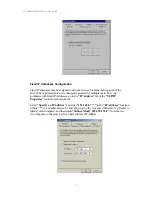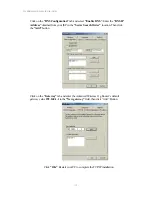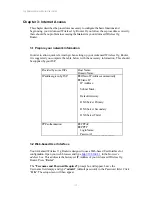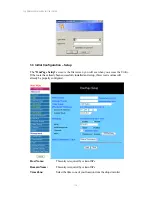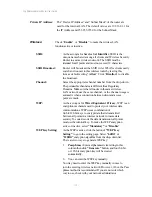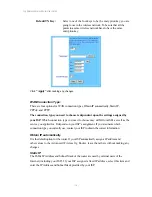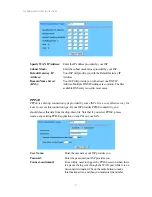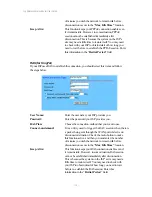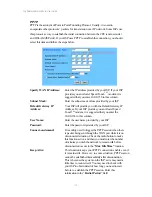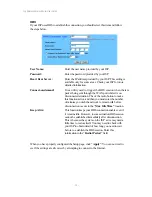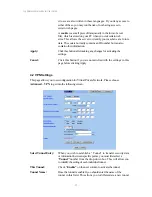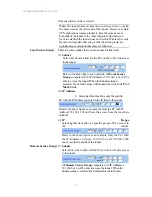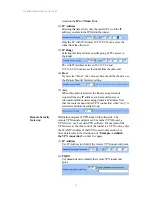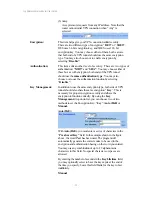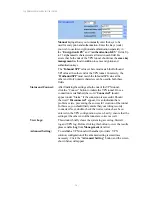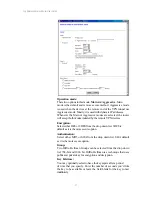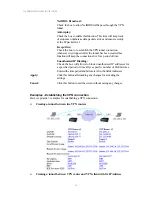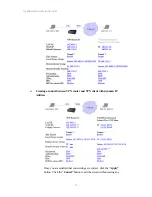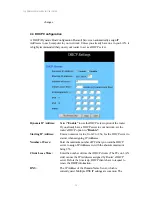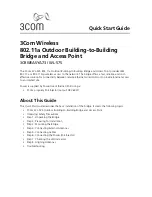
11g Wireless Security Router User Guide
- 15 -
Private IP Address:
The “Device IP Address” and “Subnet Mask” of the router are
used for the internal LAN. The default values are 192.168.1.1 for
the IP Address and 255.255.255.0 for the Subnet Mask.
Wireless:
Check “
Enable
” or “
Disable
” to make the wireless LAN
function active or inactive
.
SSID:
As
the acronym for
Service Set Identifier
, SSID is the
unique name shared among all clients and Wireless Security
Router in a same wireless network. The SSID must be
identical for all points and must not exceed 32 characters.
SSID Broadcast:
Router will broadcast the SSID to let WLANs clients easily
search and connect to this wireless router by leaving this
item as default setting “
Allow
”. Click “
Disallow
” to disable
the broadcast.
Channel:
Select the appropriate channel number from the drop-down.
The permissible channels are different from Regulatory
Domains. Make sure that all nodes in the same wireless
LAN network use the same channel, or the channel usage is
automatic when a connection between client and access
point are made.
WEP:
As the acronym for
Wired Equivalent Privacy
, WEP is an
encryption mechanism used to protect your wireless data
communications. WEP uses a combination of
64-bit/128-bit keys to encrypt data that is transmitted
between all points in a wireless network to insure data
security. To code/decode the data transmission, all points
must use the identical key. To make the WEP encryption
active or inactive, select
“Mandatory”
or
“Disable
”.
WEP Key Setting:
As the WEP is active, click the button of
“WEP Key
Setting”
to go to the setting page. Select
“64Bit
” or
“128Bit”
encryption algorithm from the drop-down list.
There are two ways to generate WEP key:
1.
Passphrase:
Enter a alphanumeric text string in this
column then click
“Generate”
button, and four 64-bit
or 128-bit encryption key will be created
automatically.
2.
You can enter the WEP key manually.
You may need to enter the WEP key manually in case to
join the existing wireless network. However, if not, the Pass
phrase method is recommended. If you are not sure which
way to use, check with your network administrator.

